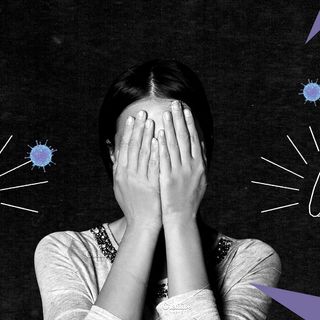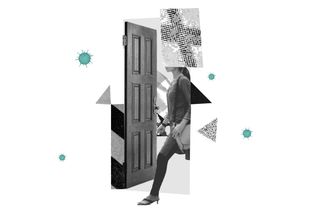
Now Is Not the Time to Get Tired of Social Distancing
Isolation-induced behavioral fatigue will make us more non-compliant, but quarantine remains our only Covid19-fighting chance.

We’re living through a pandemic — this realization has either sunk in and latched itself deep into the psyche of those hurrying to socially distance themselves, or it has brought the unbelieving (or the not-wanting-to-believe) of the severity of the situation out of the woodwork, and into restaurants, bars, parks, and denial. While the population size of the former increases along with the death toll and infection rate, there’s another problem we might soon have to deal with among the pandemic preppers: behavioral fatigue.
Behavioral fatigue is an outcome arising out of being isolated. Being cut off from the outside world is an unnatural, unpleasant experience, what with being separated from friends and family, having one’s freedom curtailed, and being constantly paranoid over the state of the outside world. In times like these, deciding to exercise social distancing is a difficult decision — one many around the world have either voluntarily or forcibly made to fight the Covid19 pandemic. But maintaining that social distance, especially indefinitely, is another ballgame altogether.
The longer you ask someone to stay isolated, the more inclined they are to break out of that state — especially because longer quarantines have been found to exacerbate the abovementioned mental health issues, The Lancet found in a rapid review of quarantine psychology.
The U.K., for example, has incorporated behavioral fatigue into its Covid19 response — it hasn’t followed in the footsteps of France, Spain, Italy and Brussels that have imposed a total, indefinite lockdown on daily life. The U.K., instead, has slowly rolled out softball measures to get its population to abide by hygiene and social distancing measures, so as not to require them to be in isolation for long periods of time. One reason, given by the government’s chief scientific advisor, Patrick Vallance, at a press conference is, “If you tell people to stay at home too early, they get fed up with this at the very point where you need them to stay at home,” WIRED reported.
Related on The Swaddle:
The Latest on Coronavirus Cases in India
But, this may not be the best way to deal with a pandemic of this proportion. In response to the U.K. government, a team of behavioral scientists wrote an open letter criticizing the government’s policy of taking it easy on the population until absolutely necessary: “We are not convinced that enough is known about ‘behavioral fatigue’ or to what extent these insights apply to the current exceptional circumstances,” they wrote, adding any policy measures that prioritize behavioral fatigue and encourage “‘carrying on as normal’ for as long as possible undercuts that urgency.”
India, too, started off with softball measures designed at informing the public and urging them to keep off public areas. Now, however, several state governments have announced shutdowns of schools, colleges, gyms, and cinema halls until March 31. Others such as West Bengal have extended that shutdown until April 15. Prime Minister Narendra Modi, for example, straddled this line while addressing the nation on Thursday, March 19. He imposed a “Janta Curfew” — “a curfew for the people and imposed by people themselves,” he said — between 7 a.m. and 9 p.m. on Sunday, March 22, as “a symbol of our restraint and following our duty in the interest of the nation. The success of Janta Curfew, its experience will prepare us for future challenges,” he added. Modi, in spinning the one-day lockdown as being the responsibility of Indians, seems to be preparing for a future in which lockdowns might be the norm.
More and more countries around the world are going the way of complete lockdowns as it becomes clear a ‘to-each-their-own’ attitude toward curbing the Covid19 outbreak doesn’t work. It will only overburden medical institutions and rob those who need healthcare the most of affordable, accessible treatment, as seen in Italy. We might not know enough about behavioral fatigue, but we know it exists, and with an increase in lockdown measures across the world, we know it’s only likely to intensify from here on.
And if and when people do find themselves in a position wherein staying in long periods of isolation is the only option, transparency from governmental and healthcare institutions is key, according to a working paper by Ireland’s Economic and Social Research Institute (ESRI). An indefinite, ill-defined period of isolation can demoralize people and increase their tendency to be non-compliant with their own social distancing measures, the paper states, in which case clarity and certainty about timelines are important. An unstandardized and non-universal shutdown timeline, as seen in India, has thrown in disarray people’s estimations of how long they’re supposed to remain cooped up, which research suggests can be a recipe for disaster.
According to ESRI, people tend not to engage in social distancing once they perceive and expect the negative consequences that can accompany such a decision; it can lead to depression, anxiety and post-traumatic stress symptoms arising out of loneliness, frustration and boredom, according to The Lancet. Moreover, it’s not just the threat of Covid19 or the severity of the isolation that proves to be an impediment; it’s also the efficacy of the solution and the effort it would take to implement the solution, ESRI states. The latter, unfortunately, has not yet been communicated to people efficiently, leaving people still wondering — why do we have to be in isolation for so long? Is it actually helping anyone? Is the effort it takes to stay in isolation proportionate to the number of Covid19 cases we can prevent? What does the quarantine timeline look like? A lack of answers to these questions can exacerbate behavioral fatigue, because of which people essentially stop believing their unending bouts of inconvenience are working, and they fall back into old routines.
Related on The Swaddle:
How Likely Are You to Get Coronavirus? Very.
Except, these old routines can be deadly in the time of coronavirus. Now is the time to hold on, to figure out ways to stay connected and stay sane while cooped up at home, and suppress any itch to stray outdoors. According to ESRI, “encouraging people to inform social media networks that they are isolated, encouraging messages and calls, and maintaining some routine” can help. “Familiarizing people with the process and ways to cope with it” and “highlighting the altruistic rationale for isolation” is likely to increase compliance, ESRI states.
An end may not be in sight — experts are looking at social distancing measures that last months to even a year, Vox reported — which is understandably frustrating. But the only way to fight Covid19 is to fulfill our civic responsibility to others, and wait for our institutions to catch up to the pandemic and do the same.
Rajvi Desai is The Swaddle's Culture Editor. After graduating from NYU as a Journalism and Politics major, she covered breaking news and politics in New York City, and dabbled in design and entertainment journalism. Back in the homeland, she's interested in tackling beauty, sports, politics and human rights in her gender-focused writing, while also co-managing The Swaddle Team's podcast, Respectfully Disagree.
Related


Why Do We Bite Our Nails?
